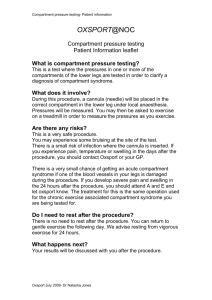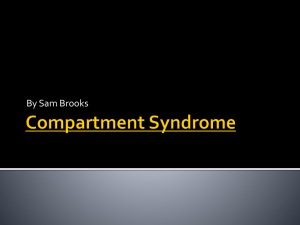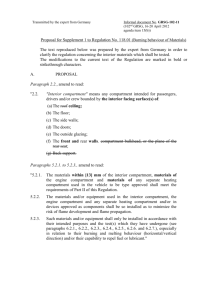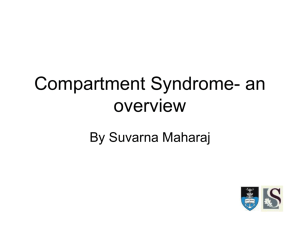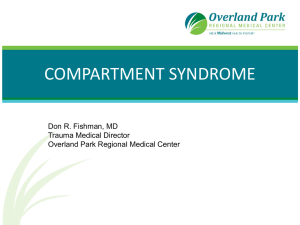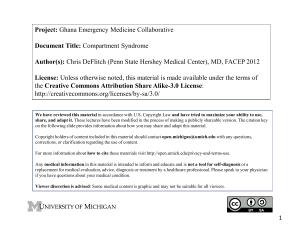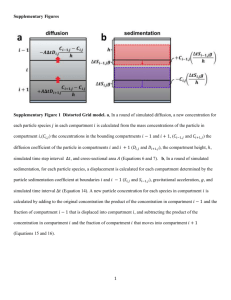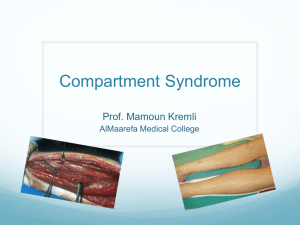Compartment Syndrome Curriculum
advertisement
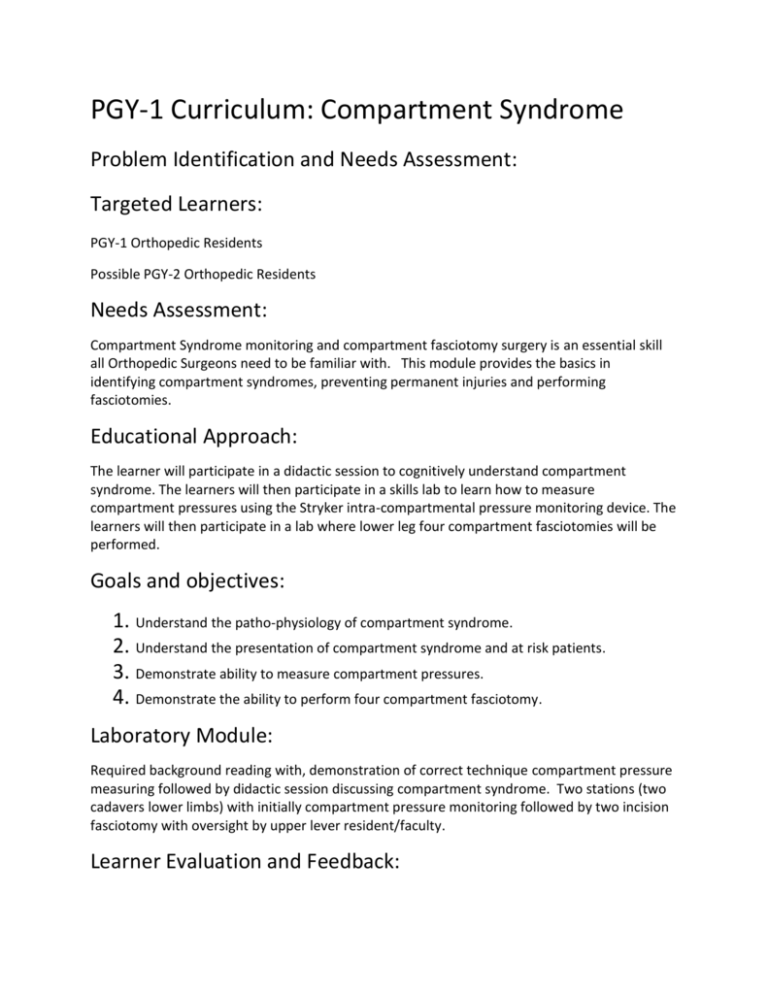
PGY-1 Curriculum: Compartment Syndrome Problem Identification and Needs Assessment: Targeted Learners: PGY-1 Orthopedic Residents Possible PGY-2 Orthopedic Residents Needs Assessment: Compartment Syndrome monitoring and compartment fasciotomy surgery is an essential skill all Orthopedic Surgeons need to be familiar with. This module provides the basics in identifying compartment syndromes, preventing permanent injuries and performing fasciotomies. Educational Approach: The learner will participate in a didactic session to cognitively understand compartment syndrome. The learners will then participate in a skills lab to learn how to measure compartment pressures using the Stryker intra-compartmental pressure monitoring device. The learners will then participate in a lab where lower leg four compartment fasciotomies will be performed. Goals and objectives: 1. Understand the patho-physiology of compartment syndrome. 2. Understand the presentation of compartment syndrome and at risk patients. 3. Demonstrate ability to measure compartment pressures. 4. Demonstrate the ability to perform four compartment fasciotomy. Laboratory Module: Required background reading with, demonstration of correct technique compartment pressure measuring followed by didactic session discussing compartment syndrome. Two stations (two cadavers lower limbs) with initially compartment pressure monitoring followed by two incision fasciotomy with oversight by upper lever resident/faculty. Learner Evaluation and Feedback: Immediate feedback given as each learner demonstrates tasks above. Lab will be evaluated by the learners in an anonymous way for didactic content, usefulness of skills training and faculty evaluation. Required Reading: Double-Incision Fasciotomy of the Leg for Decompression in Compartment Syndromes Mubarak, et al. JBJS Vol. 59-A184-187, 1977. Skeletal Trauma. PGY-1 Curriculum handbook-Compartment syndrome.
